Exposed door hardware can ruin a clean, minimalist design. It collects dust and looks clumsy, taking away from the sleek look you want. So, what’s my solution?
Invisible sliding door tracks, also called concealed hardware, hide the track and rollers from view. The hardware is built into the door itself, creating the illusion of a floating door. This gives you a clean, modern look without any visible track on the wall.
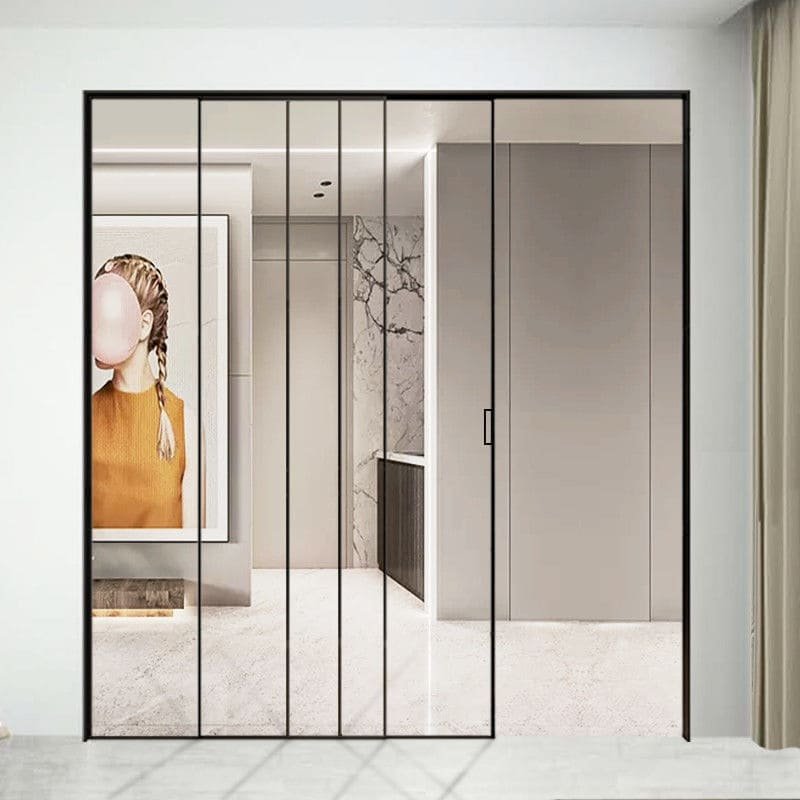
As a factory owner, I’ve spent years helping clients like linda, a buyer from UK, find the perfect hardware for their projects. He’s always looking for high-quality products that offer great value and a modern aesthetic. Invisible sliding door tracks are one of the top solutions I recommend for achieving that high-end, uncluttered design. They seem like magic, but the engineering is quite straightforward once you understand how the pieces work together. Let me break down exactly what makes these systems work so well and why they might be the perfect choice for your next project.
How does a trackless sliding door work?
Confused about how a door can slide without a visible track? It seems impossible, but it’s just clever engineering that can really elevate a design. Let me explain the mechanics.
A so-called trackless sliding door works by concealing all the hardware. A track is cut into the top of the door itself, and small guides are fixed to the wall and floor. The door hangs from rollers that move invisibly within this hidden system.
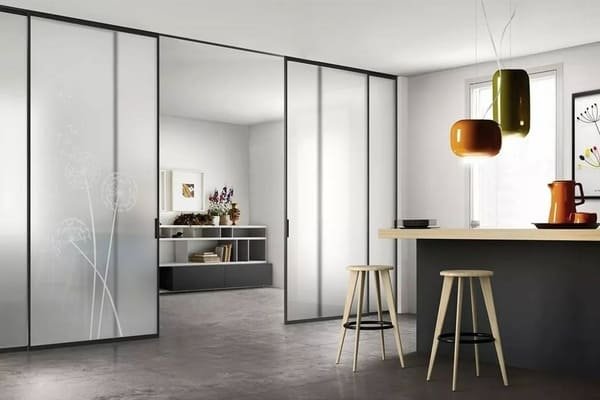
The magic of a "trackless" system is that the track is still there, just not where you expect it to be. In my factory, we manufacture these systems with incredible precision because every component has a critical job. The entire system relies on a few key parts working together perfectly.
Wall-Mounted and Floor Components1
The parts attached to your wall are stationary. A metal plate with rollers is mounted above the doorway. These rollers are what carry the full weight of the door. At the bottom, a small guide is fixed to the floor. This piece is tiny, but it’s essential. It fits into a groove at the bottom of the door to keep it from swinging out and ensures it moves in a straight line.
Door-Integrated Components2
This is where the main innovation lies. The track is not on the wall; it’s routed directly into the top edge of the wooden or composite door. The door is then hung onto the wall-mounted rollers, which fit inside this hidden track. As the door moves, the rollers glide silently inside the door itself, completely out of sight.
| Component | Location | Function |
|---|---|---|
| Roller Carriage | Wall (Above Door) | Holds the rollers and supports the door’s weight |
| Track | Inside Door (Top) | Guides the rollers for smooth movement |
| Floor Guide | Floor | Prevents the door from swinging |
| Bottom Groove | Inside Door (Bottom) | Houses the floor guide |
What is an invisible sliding door?
Are you trying to create a clean, uninterrupted wall space for your projects? Traditional sliding doors often have bulky hardware that breaks up the visual flow of a room.
An invisible sliding door is a door that uses a concealed track system, making the hardware completely hidden from view. This creates a "floating" effect, where the door appears to glide along the wall without any visible support, offering a seamless and modern look.
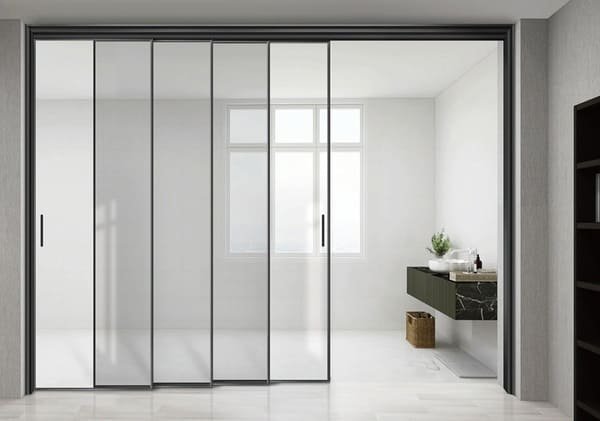
I remember working with a client on a luxury hotel project. They wanted a design that was completely minimalist. Every detail mattered. Exposed tracks were out of the question. We supplied them with our invisible door hardware, and the final result was stunning. The doors looked like they were part of the wall, gliding open and shut without any visible mechanism. This is the power of an invisible sliding door.
The "Floating" Aesthetic
The main reason clients choose this system is for the visual impact. By hiding all the hardware, the door becomes a clean, architectural element. It doesn’t distract the eye. This is perfect for modern, contemporary, and minimalist interiors where simplicity is key. It makes a space feel larger and more open because there are fewer visual interruptions.
Practical Advantages
Besides its look, this system is practical. Since there’s no track on the floor, you get a clear, unobstructed doorway3. This is safer, as there’s no tripping hazard, and much easier to clean. There is also no large track on the wall collecting dust.
| Benefit | Consideration |
|---|---|
| Completely hidden hardware | Requires professional, precise installation |
| Creates a "floating" effect | The door must be prepared (routed) for the track |
| No floor track (no trip hazard) | May have a slightly lower weight capacity |
| Clean, minimalist look | Adjustments can be more complex than exposed tracks |
What are the different types of sliding tracks?
Choosing the right sliding track can be tough for any project. There are so many options out there, and the wrong choice can ruin both the look and the function.
Sliding tracks generally fall into two categories: top-hung systems, where the door hangs from an overhead track, and bottom-rolling systems that use a floor track. Within these, there are visible tracks like barn doors, pocket door tracks, and concealed or invisible tracks.
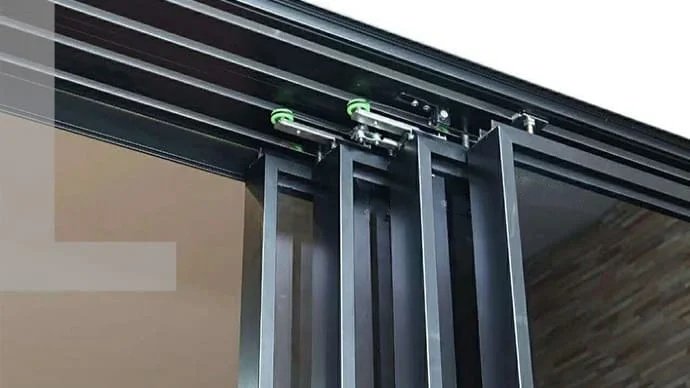
As a manufacturer, we produce a wide variety of systems because every project has different needs. For a buyer like Jacky, understanding the fundamental differences is key to sourcing the right hardware. He needs to balance aesthetics, functionality, installation complexity, and cost for his clients. Let’s break down the most common types.
Top-Hung Systems
In these systems, the door hangs from rollers that run along a track mounted above the door. The floor remains clear. This is the category where you’ll find exposed barn door hardware, pocket door systems, and the invisible tracks we’ve been discussing. Top-hung systems4 are my preferred style because they offer a cleaner look and avoid a floor track that can collect dirt or become a hazard.
Bottom-Rolling Systems5
Here, the door’s weight is supported by rollers that run along a track on the floor. A guide track is usually placed at the top to keep the door stable. These are common for wardrobe or cabinet doors and can be a good choice for very heavy doors, as the floor supports the load. However, the floor track can be intrusive.
| Track Type | Visibility | Best For | Pros | Cons |
|---|---|---|---|---|
| Exposed Barn Door | High | Rustic, industrial looks | Easy to install, decorative | Takes up visible wall space |
| Pocket Door | Hidden | Saving maximum space | Door disappears completely | Complex wall framing and installation |
| Invisible Track | Hidden | Modern, minimalist designs | Creates a "floating" look | Requires precise door machining |
| Bottom-Rolling | Low | Wardrobes, cabinets, heavy doors | Supports heavy weight | Floor track can be a trip hazard |
How does a ghost track sliding door work?
The term "ghost track" sounds mysterious, doesn’t it? This name perfectly describes the effect, because the door seems to move on its own. But the mechanics behind it are simple.
A ghost track sliding door works by using hardware mounted to the wall and floor, while the track is recessed into the top edge of the door. As the door moves, rollers glide silently within this hidden track, creating a floating, or "ghostly," illusion.
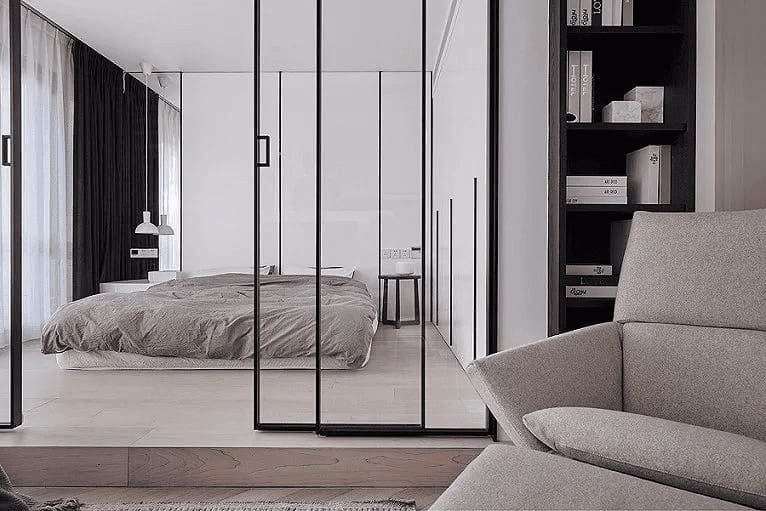
"Ghost track" is just another name for an invisible or concealed hardware system. We call it that because the effect is quite magical. From our factory’s perspective, manufacturing these kits requires high-precision machinery to ensure every component fits and functions perfectly. The key is in how the separate parts work together seamlessly to create the illusion.
The Key Components
The system has three main parts. First is the carrier plate with rollers, which we build from high-strength steel. This gets mounted on the wall above the door opening. Second is the floor guide6, a small but strong piece that keeps the door stable. The third, and most important, is the aluminum track7 that is routed into the top of the door. This precision groove is where the magic happens.
The Motion Explained
Once installed, the door is lifted so the track inside its top edge engages with the rollers on the wall plate. The door’s entire weight now hangs on these hidden rollers. The small floor guide6 fits into a groove in the bottom of the door, preventing it from swinging. When you slide the door, it’s actually gliding along the fixed rollers, but since the track and rollers are hidden, the door appears to float effortlessly along the wall.
Conclusion
Invisible sliding door tracks offer a stunning, minimalist look by hiding all hardware. They are the perfect solution for modern designs that value clean lines and a seamless aesthetic.
Explore this link to understand the advantages of wall-mounted systems, enhancing your door’s functionality and aesthetics. ↩
Discover how door-integrated components can revolutionize your space, providing seamless design and enhanced performance.
| ↩Discover the advantages of unobstructed doorways, including safety and ease of cleaning, which can transform your living space. ↩
Explore the benefits of top-hung systems to understand why they are preferred for a cleaner look and functionality. ↩
Learn about bottom-rolling systems to see if they are suitable for your heavy door needs and their potential drawbacks. ↩
Exploring the function of floor guides will help you ensure stability and smooth operation in your sliding door installations. ↩ ↩
Understanding the role of aluminum tracks can enhance your knowledge of door mechanics and improve installation techniques. ↩

